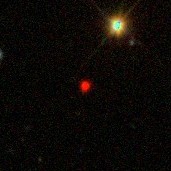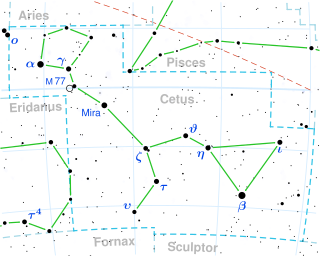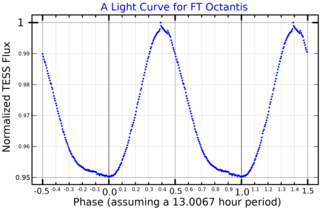HD 4628 is a main sequence star in the equatorial constellation of Pisces. It has a spectral classification of K2.5 V and an effective temperature of 5,055 K, giving it an orange-red hue with a slightly smaller mass and girth than the Sun. HD 4628 lies at a distance of approximately 24.3 light years from the Sun based on parallax. The apparent magnitude of 5.7 is just sufficient for this star to be viewed with the unaided eye. The star appears to be slightly older than the Sun—approximately 5.4 billion years in age. The surface activity is low and, based upon the detection of UV emission, it may have a relatively cool corona with a temperature of one million K.
109 Piscium is a yellow hued G-type main-sequence star located about 108 light-years away in the zodiac constellation of Pisces. It is near the lower limit of visibility to the naked eye with an apparent visual magnitude of 6.27. The star is moving closer to the Earth with a heliocentric radial velocity of −45.5 km/s. It has one known exoplanet.

Iota Piscium is single, F-type main-sequence star located 45 light years from Earth, in the constellation Pisces. Its spectral type is F7V, which means that it is somewhat larger and brighter than the Sun, but still within the range considered to have the potential for Earth-like planets. It has a surface temperature of about 6,000 to 7,500 K. Iota Piscium is suspected to be a variable star, and was once thought to have one or two stellar companions, but both are line-of-sight coincidences. It displays a far-infrared excess at a wavelength of 70μm, suggesting it is being orbited by a cold debris disk.

IC 2391 is an open cluster in the constellation Vela consisting of hot, young, blueish stars, some of which binaries and one of which is a quadruple. Persian astronomer A. a.-R. Al Sufi first described it as "a nebulous star" in c. 964. It was re-found by Abbe Lacaille and cataloged as Lac II 5.

TVLM 513-46546 is an M9 ultracool dwarf at the red dwarf/brown dwarf mass boundary in the constellation Boötes. It exhibits flare star activity, which is most pronounced at radio wavelengths. The star has a mass approximately 80 times the mass of Jupiter. The radio emission is broadband and highly circularly polarized, similar to planetary auroral radio emissions. The radio emission is periodic, with bursts emitted every 7054 s, with nearly one hundredth of a second precision. Subtle variations in the radio pulses could suggest that the ultracool dwarf rotates faster at the equator than the poles in a manner similar to the Sun.

HD 15115 is a single star in the equatorial constellation of Cetus. It is readily visible in binoculars or a small telescope, but is considered too dim to be seen with the naked eye at an apparent visual magnitude of 6.76. The distance to this object is 160 light years based on parallax, and it is slowly drifting further away at the rate of about 1 km/s. It has been proposed as a member of the Beta Pictoris moving group or the Tucana-Horologium association of co-moving stars; there is some ambiguity as to its true membership.
AB Doradus Moving Group is a group of about 30 associated stars that are moving through space together with the star AB Doradus. A moving group is distinguished by its members having about the same age, composition and motion through space. Hence they most likely formed in the same location.
HD 88955 is a single, white-hued star in the southern constellation of Vela. It can be viewed with the naked eye, having an apparent visual magnitude of 3.85. The distance to HD 88955 can be determined from its annual parallax shift of 32.7 mas, which yields a separation of 100 light years from the Sun. It is moving further from the Earth with a heliocentric radial velocity of +7 km/s. Bayesian analysis suggests HD 88955 is a member of the Argus Association, a group of co-moving stars usually associated with the IC 2391 open cluster.
HAT-P-8 is a magnitude 10 star located 700 light-years away in Pegasus. It is a F-type star about 28% more massive than the Sun. Two red dwarf companions have been detected around HAT-P-8. The first has a spectral type of M5V and has a mass of 0.22 M☉. The second is even less massive, at 0.18 M☉, and its spectral type is M6V.
72 Cygni is a star in the northern constellation of Cygnus, located 299 light years from the Sun and a member of the Hercules stream. It is visible to the naked eye as a faint, orange-hued star with an apparent visual magnitude of 4.87. 72 Cyg is moving closer to the Earth with a heliocentric radial velocity of −68 km/s. It has a relatively high proper motion, traversing the celestial sphere at the rate of 0.154″ per year.

29 Cygni is a single star in the northern constellation of Cygnus. It is dimly visible to the naked eye as a white-hued star with an apparent visual magnitude of 4.93. The distance to 29 Cyg, as estimated from an annual parallax shift of 24.5 mas, is 133 light years. The star is moving closer to the Earth with a heliocentric radial velocity of −17 km/s. It is a member of the 30–50 million year old Argus Association of co-moving stars.
Kepler-65 is a subgiant star slightly more massive than the Sun and has at least four planets.

49 Ceti is a single star in the equatorial constellation of Cetus. It is visible to the naked eye as a dim, white-hued star with an apparent visual magnitude of 5.607. The star is located 186 light-years away from the Solar System, based on its parallax, and is drifting further away with a radial velocity of +10 km/s. 49 Ceti has been identified as a member of the 40-million-year-old Argus Association.

GU Piscium b (GU Psc b) is a directly imaged planetary-mass companion orbiting the star GU Piscium, with an extremely large orbit of 2,000 AU (3.0×1011 km), and an apparent angular separation of 42 arc seconds. The planet is located at right ascension 01h 12m 36.48s declination +17° 04′ 31.8″ at a distance of 48 pc (160 ly).
Kepler-24b is an exoplanet orbiting the star Kepler-24, located in the constellation Lyra. It was discovered by the Kepler telescope in January 2012. It orbits its parent star at only 0.08 astronomical units away, and at its distance it completes an orbit once every 8.145 days.

TYC 9486-927-1 is the primary of a possible trinary star system located at a distance of 26.7 parsecs from Earth in the southern direction in the constellation of Octans. It is a BY Draconis variable, with large starspots causing it to change brightness as it rotates every 13 hours.
Kepler-13 or KOI-13 is a stellar triple star system consisting of Kepler-13A, around which an orbiting hot Jupiter exoplanet was discovered with the Kepler spacecraft in 2011, and Kepler-13B a common proper motion companion star which has an additional star orbiting it.

The Tucana-Horologium association (Tuc-Hor), or Tucana Horologium moving group, is a stellar association with an age of 45 ± 4 Myr and it is one of the largest stellar associations within 100 parsecs. The association has a similar size to the Beta Pictoris moving group (BPMG) and contains, like BPMG, more than 12 stars with spectral type B, A and F. The association is named after two southern constellations, the constellation Tucana and the constellation Horologium.
HATS-3 is an F-type main-sequence star 1,380 light-years away. Its surface temperature is 6351±76 K. HATS-3 is relatively depleted in its concentration of heavy elements, with a metallicity Fe/H index of −0.157±0.07, but is slightly younger than the Sun at an age of 3.2+0.6
−0.4 billion years.









